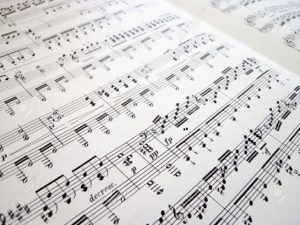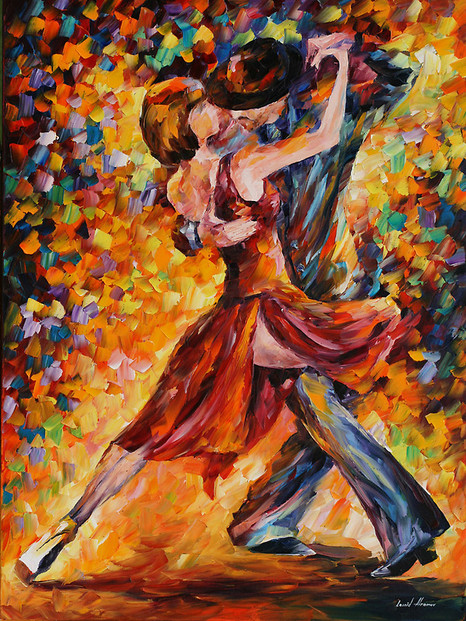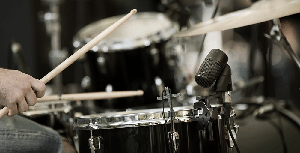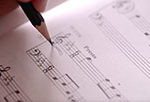
One of the fastest ways to get beginners to give up on playing the guitar is to have them learn songs beyond their skill level, which can be incredibly frustrating, demoralizing, and even physically painful. Have you ever encountered a song that has one too many barre chords, or maybe one with chords with strange symbols like G#7b5#9? Songs like these typically turn off many beginners and may lead them to giving up the hobby.
In this article, we’ll look at songs that any beginner can learn easily, and we’ll also discuss what makes a song easy to play. Along the way, I will also leave some tips to help you with the learning process. If you’re simply looking for a list of simple songs, feel free to skip to the list at the end of the article.
Easy like Sunday Morning
So what exactly makes a song easy to play? Well, many factors determine the difficulty of a song, and here are the main ones:
- Number of chords in the song
- Key of the song
- Availability of anchor fingers
- Presence of barre chords
- Strumming pattern
- Availability of simplified chords
- Tempo
Everybody loves songs with four chords
The first point is pretty obvious. The fewer chords a song has, the easier it is, provided it doesn’t have any other difficult factors involved (barre chords, complex chords, difficult key, etc.). Generally, if a song has four or fewer chords throughout the entire song, it’s going to be pretty easy. Songs that fit this criteria are generally in the pop and rock genres, as these two genres don’t particularly have very complex harmony. In fact, you’d be surprised how many pop songs out there use the same four-chord progression. A song like “Grenade” by Bruno Mars shares the same four-chord progression with hundreds of other songs like “I’m Yours” by Jason Mraz, “Someone Like You” by Adele, “Call Me Maybe” by Carly Rae Jepsen, and the list goes on and on.
The list of songs provided at the end of the article mostly consists of songs with three or four chords. Many of the greatest songs ever written use only three chords in the entirety of the song.
Guitar friendly keys
Every instrument has its own easier keys. For the piano, the keys that have the least number of sharps and flats are the easiest. For the guitar, the easiest keys are the ones that utilize the most open chords, which only use the first three frets of the fretboard and have one or more open strings being played.
For example, this is how you play E minor - 
As you can see, the only notes you have to fret are on the second fret, and four open strings are being played.
The guitar friendly keys are C, A, G, E, and D. These five keys have many of their diatonic chords (chords in the key) played as open chords.
Anchor fingers
This is a really simple but highly effective idea to help you smoothen and speed up chord changes. An anchor finger is basically a finger on your fretting hand that stays on the same string between two or more chords. You can then use this finger to “anchor” your hand to the strings while doing chord changes, instead of a lifting all your fingers off the fretboard. It’s ridiculous how effective this technique is, and it’s so useful because it gives your hand a sense of physical space when doing the chord changes.
Very often, you have to plan anchor fingers before playing a song. Let’s say the song we’re playing has the chords A, E, and D major.



In case you don’t know this yet, the numbers below the chord diagrams represent the fingers on your left hand. 1 is index, 2 is middle, 3 is ring, and 4 is pinky.
This is how you’d typically play these three chords. Notice how your index finger stays on the same string (3rd string) between E major and D major. This finger can be used as your anchor finger. However, A major doesn’t share the same anchor finger on the 3rd string. In order to include an anchor finger in your A major, you’ll have to change your fingering for the chord.
If you play your A major with this fingering, you’ll now have your index finger as an anchor finger among the three chords.
Here is how to use your anchor fingers effectively:
- Always keep your anchor finger on the string.
- Remove only the other two non-anchor fingers when doing the chord change.
- Move your anchor finger to where it should go; if it stays on the same fret, that’s great!
- When moving your anchor finger, release the pressure off the string, but do not lose contact with it to maintain a sense of physical space.
- Once your anchor finger is where it’s supposed to be, place the other two fingers where they are supposed to go.
You’ll find that changing chords like this is infinitely easier than lifting all your fingers off the fretboard and then placing them back down.
Look for ways to insert anchor fingers wherever possible. You will also find that anchor fingers are much more available in certain keys than in others.
Menacing barre chords
Barre chords are definitely a major factor in the difficulty of a song for beginners. Learning how to play the barre chords are without a doubt one of the trickier things about playing guitar, but just because it’s difficult doesn’t mean you shouldn’t learn how to do it. In fact, you always want to practice the things that you can’t do. Here are a few tips to help you along:
- Playing barre chords, and playing guitar in general, should not be a physically demanding action. It’s not about how much pressure you put onto the strings, but rather how you position your fingers. Check out this post for more information on how to avoid using excessive force when playing the guitar.
- Use the side of your index finger instead of the bottom to barre the strings.
- Keep your fingers near the fretwire.
- Instead of squeezing the neck between your thumb and fingers, imagine pulling the neck towards you with the muscles in your back.
Strumming patterns
Strumming patterns only get tricky once we get into the realm of soul, funk, jazz, and R&B music. Pop music on the other hand only has a couple of strumming patterns that are used over and over again. Once you know the main two or three strumming patterns, you’re more or less set for life.
First, a quick word on strumming patterns.
D = Down strum
U = Up strum
| 1 | e | + | a | 2 | e | + | a | 3 | e | + | a | 4 | e | + | a |
| D | U | D | U | D | U | D | U | D | U | D | U | D | U | D | U |
All strumming patterns in pop music are really just a constant down and up strum on sixteenth notes; the only difference among them are which strums are removed.
So now that’s out of the way, let’s look at three of the most common strumming patterns.
1)
| 1 | e | + | a | 2 | e | + | a | 3 | e | + | a | 4 | e | + | a |
| D | D | D | D | D | D | D | D |
2)
| 1 | e | + | a | 2 | e | + | a | 3 | e | + | a | 4 | e | + | a |
| D | D | D | D | U | U | D | D | U | D | U |
3)
| 1 | e | + | a | 2 | e | + | a | 3 | e | + | a | 4 | e | + | a |
| D | D | U | D | D | U | D | U | D | U | U | D |
One way to get these strumming patterns down is to turn on a metronome and set it to beat on the down beats and the “and” beats. Once you have that going, mute your strings and try to strum along with the metronome while following these strumming patterns. Have the metronome going at a slower speed first to make things easier, and then slowly speed it up.
It also helps to use your voice to say “down” and “up” first before strumming these patterns on the guitar. In other words, simulate strumming the guitar with your voice first.
Simplify those chords
One great way to make playing songs a lot easier is to use simplified, or “cheat,” chords. This is easiest to demonstrate with songs in the keys of C, G, and E major. First, let’s look at the chords that can be played in those three keys.
| I | ii | iii | IV | V | vi | vii° | |
| C major | C | Dm | Em | F | G | Am | Bdim |
| G major | G | Am | Bm | C | D | Em | F#dim |
| E major | E | F#m | G#m | A | B | C#m | D#dim |
The chart above shows seven possible chords that can appear in each key. Occasionally, you will find chords that don’t belong in a certain key; for example, an F chord might appear in a song in the key of G major, but that isn’t common in pop music. Additionally, the seventh chord, identified as the vii° chord, is rarely used in pop music, so we can just think of each key as having six possible chords.
In the key of C major, here are the chords that can be simplified:
- Instead of playing Dm like this
 some people may find it easier to play it like this
some people may find it easier to play it like this 
- This does require you to use the index finger to barre the first and second strings.
- Using this replacement chord allows you to have an anchor finger on the second string between the C and Dm chords.
 See how the index finger is already on the first fret of the second string when playing a C chord?
See how the index finger is already on the first fret of the second string when playing a C chord?
- Instead of playing the regular F barre chord like this
 you can opt to play a smaller portion of the chord like this
you can opt to play a smaller portion of the chord like this 
- Instead of playing the G chord normally like this
 you can simply play it with one finger this way
you can simply play it with one finger this way 
- Notice how the fifth and first strings are muted. You can mute them by using parts of your ring finger to lightly touch those two strings.
- This simplified chord frees the rest of your fingers, which makes switching to other chords much easier.
In the key of G major, the C and Em chords can be simplified using the following replacement chords:
- C can be played like this

- Em can be played like this

- Playing your C and Em chords like that allows you to constantly have your ring finger as an anchor finger between the G, D, Em, and C chords.
- Notice that your ring finger is always on the same string and fret.




The key of E major is interesting because, if you refer back to the chart with the seven chords in the key of E major, it would appear that the only way to play the chords F#m, G#m, B, and C#m is to use barre chords. However, because of the way the guitar is tuned, songs in the key of E major can always have the first and second strings played as open strings, regardless of what chord is being played.
Here is how you’d normally play the chords in the key of E major -






That’s a lot of barre chords.






Instead, here is how you can replace all the barre chords with simplified chords, and at the same time keep the tonality of each chord:
Notice how the F#m and G#m require you to mute the fifth string. You can achieve this by lightly touching the fifth string with the side of your middle finger. You will also notice that these replacement chords have a really big sound compared to the regular barre chords, so not only are they simplified, they are also improved tone wise!
Fast is hard, slow is easy
Last but not least, one of the more obvious factors that determines the difficulty of a song is the tempo. Fast songs are naturally more difficult than slow ones because they require you to physically move faster.
One very important thing to note is that in order to play songs at a faster pace, it is crucial that you learn to physically and mentally relax yourself. It may seem counterintuitive initially, but once you try it out, it will seem so obvious. We tend to tense up when playing fast and difficult songs because we’re focusing so hard on nailing it, but have you ever noticed that you are stiffer and slower when your body is tense? Athletes warm up before their races so their bodies will be loose and relaxed in order to perform at their maximum capabilities; the same principle must be applied to playing music. You can only move faster when your mind and body are relaxed.
Another point is, you never want to play a fast song at 100% speed when first learning it. You will acquire a lot of bad habits doing this. Remember that practice doesn’t make perfect; instead, practice makes things permanent. If you practice sloppy technique (because you don’t know how to play fast yet), guess what you’ll end up with? In contrast, practicing at slower speeds with an emphasis on perfect technique is what you want to do.
To sum up, here are the things to pay attention to:
- Always remember to relax physically and mentally.
- Start slow, and then build up speed.
- Use a metronome to force yourself to go slower.
- If you keep making mistakes, or find it difficult to relax while playing, then you’re very likely going too fast.
- Don’t let your ego get in the way. Very often we mistakenly believe that we’ve already mastered something at a slower speed, so we prematurely speed up the tempo.
Patience, young grasshopper.
Very often we tend to overextend ourselves, but unfortunately, when we overextend ourselves while playing music, it often leads to sounding tense or rushed. You will always be able to play songs that you find “easy” a lot better than songs that you struggle with, so come back to these tips often to remind yourself of how you can simplify a song and make it feel easy. If you watch your musical heroes perform, they always look like what they’re playing is the simplest thing in the world, and that really is a requirement to make what you’re playing sound musical and great.
For more tips on how to practice, or if you’re looking for high quality guided lessons, please check out Liberty Park Music.
With that, I will leave you with a list of simple songs that are great for beginners to learn.
List of songs
- Love Me Do - The Beatles
- Three Little Birds - Bob Marley
- Chasing Cars - Snow Patrol
- Common People - Pulp
- Wonderwall - Oasis
- The Scientist - Coldplay
- Zombie - The Cranberries
- Ain’t No Sunshine - Bill Withers
- Hey Soul Sister - Train
- Hey Joe - Jimi Hendrix
- Stand By Me - Ben E. King
- What’s Up - 4 Non Blondes
- Yellow Submarine - The Beatles
- High and Dry - Radiohead
- All Of Me - John Legend
- Love Me Like You Do - Ellie Goulding
- Wake Me Up When September Ends - Green Day
- Good Riddance (Time of Your Life) - Green Day
- Wish You Were Here - Pink Floyd
- Chandelier - Sia
- Redemption Song - Bob Marley
- Mad World - Gary Jules
- Rude - Magic
- Closer - The Chainsmokers
- I’m Yours - Jason Mraz
- Leaving On A Jetplane - John Denver
- Wonderful Tonight - Eric Clapton
- Hello - Adele
- Riptide - Vance Joy
- Halo - Beyonce
- Don’t Look Back in Anger - Oasis
- She Will Be Loved - Maroon 5
- Viva La Vida - Coldplay
- Love Me Do - The Beatles
- Fire - Bruce Springsteen
- Sunday Morning - Maroon 5
Ready to learn the guitar?
Start learning with our 30-day free trial! Try our guitar courses!
About Liberty Park Music
LPM is an online music school. We teach a variety of instruments and styles, including classical and jazz guitar, piano, drums, and music theory. We offer high-quality music lessons designed by accredited teachers from around the world. Our growing database of over 350 lessons come with many features—self-assessments, live chats, quizzes etc. Learn music with LPM, anytime, anywhere!


 See how the index finger is already on the first fret of the second string when playing a C chord?
See how the index finger is already on the first fret of the second string when playing a C chord? 











